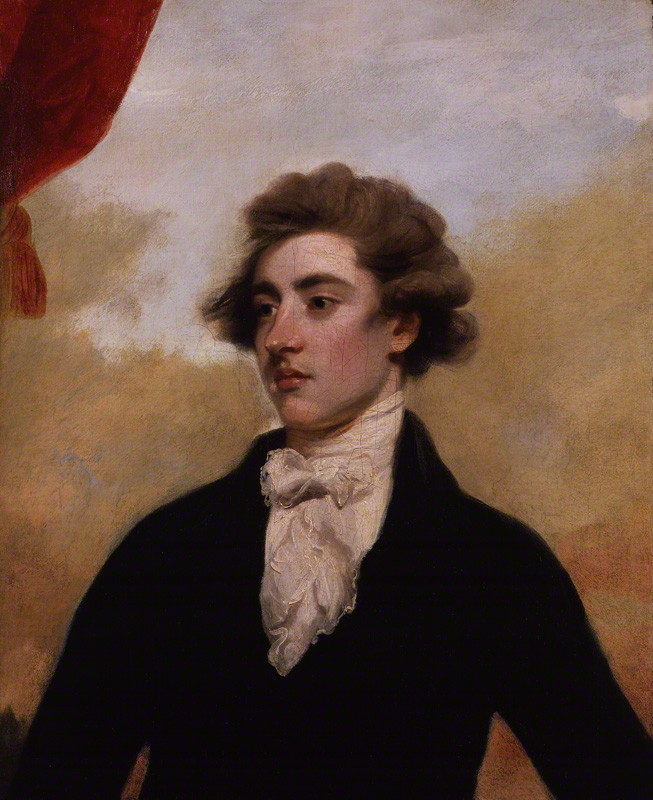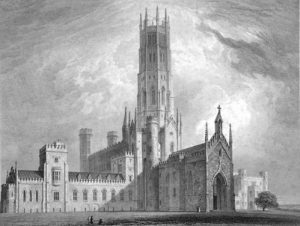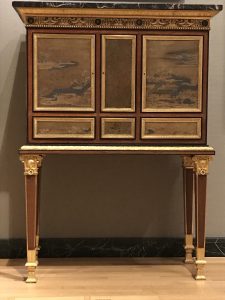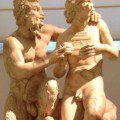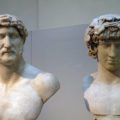The world’s art museums are full of Gay Secrets. These two gorgeous objects from the Museum of Fine Arts Boston are a great example. They are the kind of things you would just glance at in a museum—and then you’d move on to something you knew more about. But hold on a minute! Both belonged to a man named William Beckford (see the portrait from the UK’s National Portrait Gallery above)—who was the subject of the biggest gay scandal in 18th century England.
Beckford was amazing person. Aside from being the wealthiest commoner in late 18th century England, he had an incredible array of talents: he wrote the first gothic novel in English (in fact, he wrote it in French and had it translated!), he was a high-level watercolorist, and he studied piano with none other than Mozart. He was also probably the most important art collector in England: major works from his collections are the highpoints of collections like the UK and US National Galleries today.
And…he was the subject of a massive GAY SCANDAL. Beckford had a relationship with a boy named William Courtenay, Viscount of Powderham and later Earl of Devon, nicknamed “Kitty” (ahem!). In 1784, when Beckford was 24 and Kitty 16, Beckford was found in a locked room with Kitty. Another houseguest claimed he was horsewhipping him—possibly because Kitty had written a love letter to someone else. We don’t really know, because there was never a trial, but Beckford was ostracized by English society for the rest of his life, despite his wealth. For instance, it remained fashionable to visit his massive gothic-cathedral-style country house to see his art collection—but ONLY when he was not at home. In fact, one of the amazing things about Beckford is that unlike most other gentlemen in similar circumstances (including Kitty, who fled to Paris at a certain point and never returned) he stayed in England for much of his life and braved it out.
But the most interesting thing about Beckford is that we have his scrapbooks and letters, and we can learn a LOT about gay life in 18th century England from them. Among other things, Beckford kept articles about all the sodomy trials in England and comments sympathetically in his letters. He is not like a 17th century rake sleeping with his pageboys, who would have identified with other aristocratic rakes. Instead, he has something like a gay identity: he clearly identifies with the men arrested in raids on Molly houses.
Anyway, to return to the objects, they are gorgeous. The cabinet is for instance far more beautiful than one in the same gallery that belonged to Marie Antoinette. It is especially beautiful because of the Chinese paintings from Beckford’s collection that he had lacquered on to the front. In short, although he didn’t make the elements, he did think of the way they are combined. The other object is a jewel case which Beckford himself designed for his “companion” Gregorio Franchi. I say “companion” because that is how the museum defines him. It’s hard to say what his role was in Beckford’s life. He was a long-term employee of Beckford’s during a long stay in Portugal who came back to England with him. Perhaps he was originally a lover? In any case, by the time we have their correspondence, he was Beckford’s confidant and something like an in-house pimp: Beckford would for instance send him around England to check out potential lovers.
See what you mean? There are a lot of fun and interesting Gay Secrets in every art museum….

